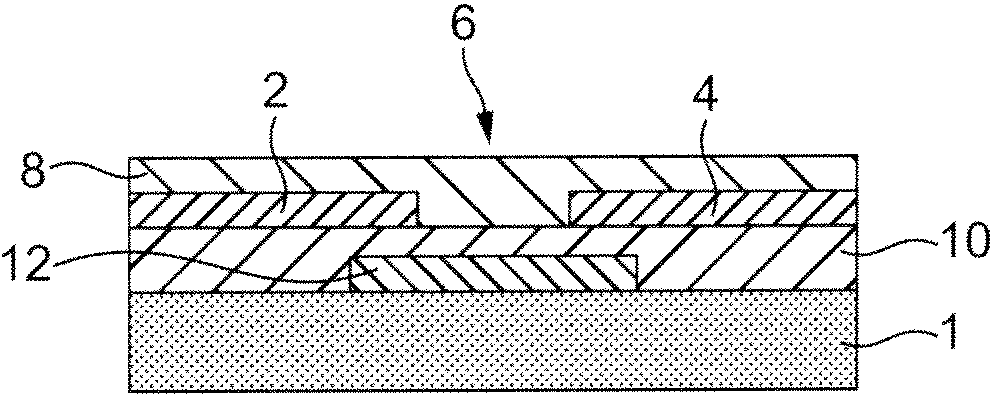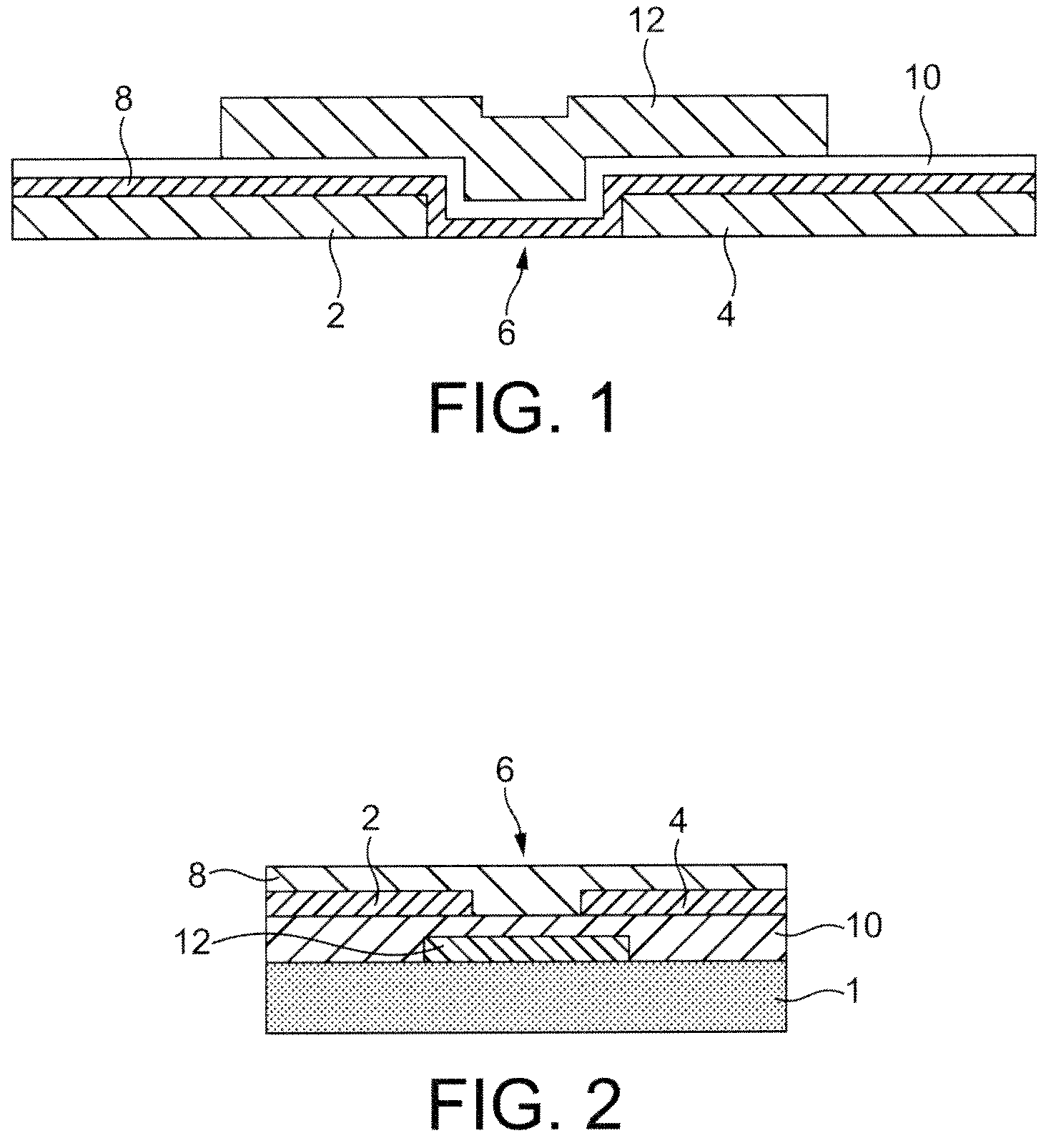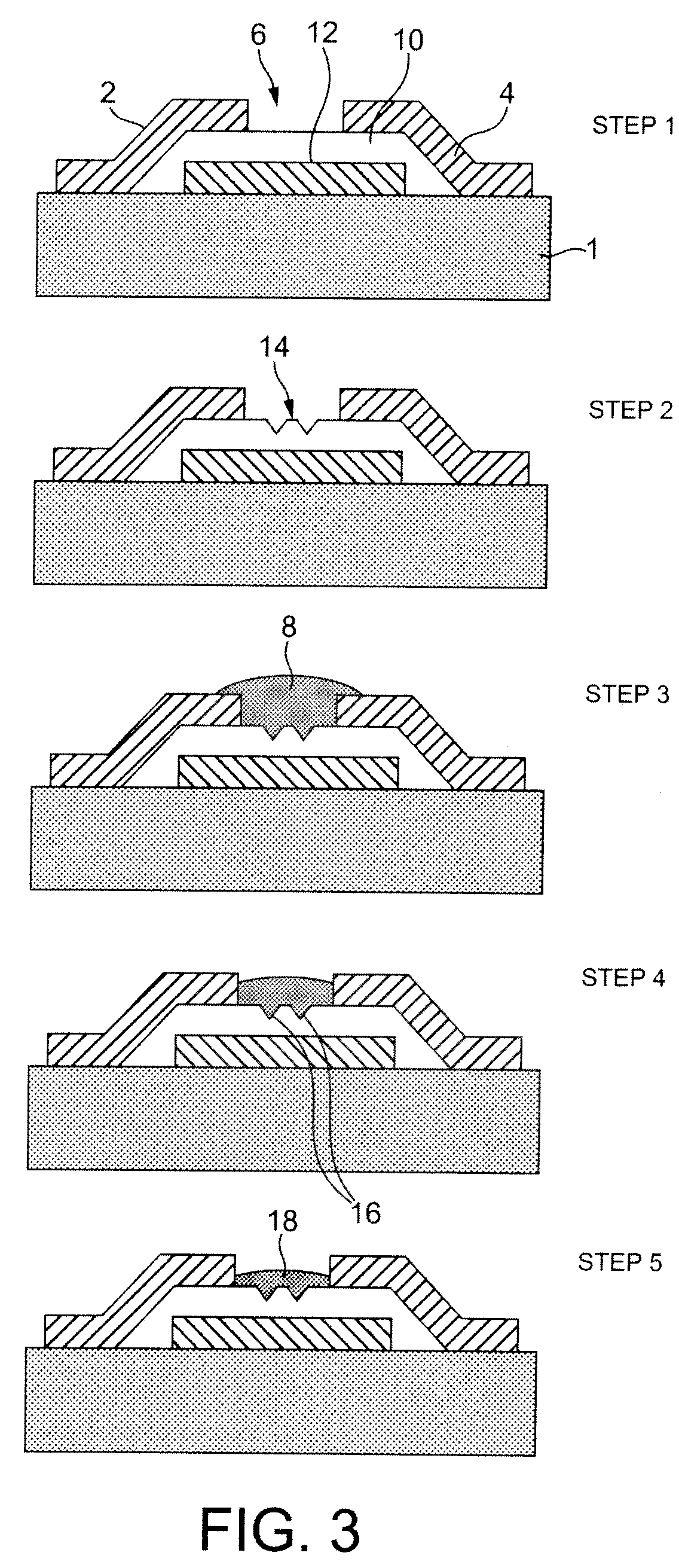Organic Thin Film Transistors
- Summary
- Abstract
- Description
- Claims
- Application Information
AI Technical Summary
Benefits of technology
Problems solved by technology
Method used
Image
Examples
Embodiment Construction
[0042]An example method of how this technique may be carried out is shown schematically in FIG. 3.
[0043]In step 1, a substrate 1 is initially prepared by formation of a gate electrode 12, a dielectric layer 10, and source and drain contacts 2, 4 thereon (this is a bottom gate, bottom contact transistor architecture).
[0044]The electrodes can be printed or deposited using other simple patterning techniques which are known in the art.
[0045]The dielectric material may be solution processable. For example, the dielectric layer may be an organic photoresist such as a polyimide which can be readily spin coated and patterned. Alternatively, the dielectric layer may be an inorganic material such as SiO2.
[0046]In step 2, the exposed surface of the dielectric layer in the channel region is treated to form crystallization sites. In the embodiment shown in FIG. 3, a physical seeding method is utilized in which the surface is stamped to form ordered nano-indentations 14. Methods for indenting the...
PUM
 Login to View More
Login to View More Abstract
Description
Claims
Application Information
 Login to View More
Login to View More - R&D
- Intellectual Property
- Life Sciences
- Materials
- Tech Scout
- Unparalleled Data Quality
- Higher Quality Content
- 60% Fewer Hallucinations
Browse by: Latest US Patents, China's latest patents, Technical Efficacy Thesaurus, Application Domain, Technology Topic, Popular Technical Reports.
© 2025 PatSnap. All rights reserved.Legal|Privacy policy|Modern Slavery Act Transparency Statement|Sitemap|About US| Contact US: help@patsnap.com



